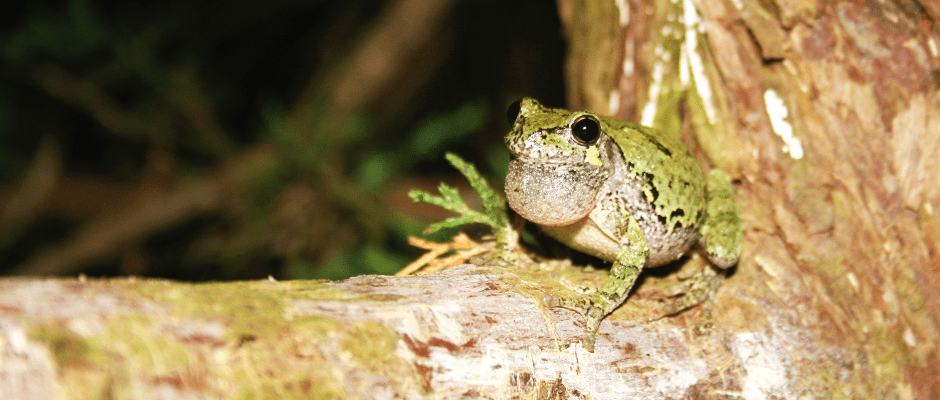Share this article
Researchers examine potential impacts of climate change on treefrogs
The trill of the gray treefrog (Hyla versicolor) attracts female mates, but fluctuating temperatures can cause the pitches of its call to become higher or lower than the intermediate pitched call the females prefer.
Researchers looked at how temperature affects female treefrogs’ mating preferences in a recent study published in Herpetological Conservation and Biology.
“We knew of instances where, in different species of frogs, temperature changes cause males to shift [the pitch of their calls] but the females don’t change,” said Sarah Conditt Humfeld, an instructor at the University of Missouri and lead author of the study. As a result, she says in cold temperatures, females tend to mate with the wrong species. “We wanted to replicate this type of study in a different species.”
As part of the study, Humfeld and Brice Grunert, an undergraduate student at the University of Missouri and co-author, caught gray treefrogs — a fairly easy species to find and capture — and brought them back to the lab. There, they played computer synthesized sounds of male mating calls in different pitches and took note of which calls the female frog would move toward. They repeated the experiment at different temperatures to test their hypothesis.
“The main result of the study was that we don’t see any uncoupling,” Humfeld said. “Even if the temperature increases as much as five degrees, [gray treefrog] females will still be able to recognize the sound and they’re attracted to the [correct] species.” This is true for the frogs in Missouri, Humfeld added, but not necessarily for northern populations that have not yet been studied.
This means that the females of this species are going to stay pretty well-matched with their male counterparts, Humfeld says. However, the researchers still need to determine if the frogs’ habitat is affected by climate change. “This [study] was just the behavioral perspective,” Humfeld said.
Gray treefrogs are fairly common and are found throughout the eastern United States. Humfeld says this makes them a good candidate to study how climate change affects a common species.
“Polar bears are the face of climate change having an impact on wildlife,” Humfeld said. “They’re compelling, but we don’t all have polar bears living in our backyards. Gray treefrogs are more accessible.”
Header Image: A gray treefrog sits on a tree branch. This common species in the eastern United States offers opportunities to study the impacts of climate change on behavior. ©Brice Grunert








